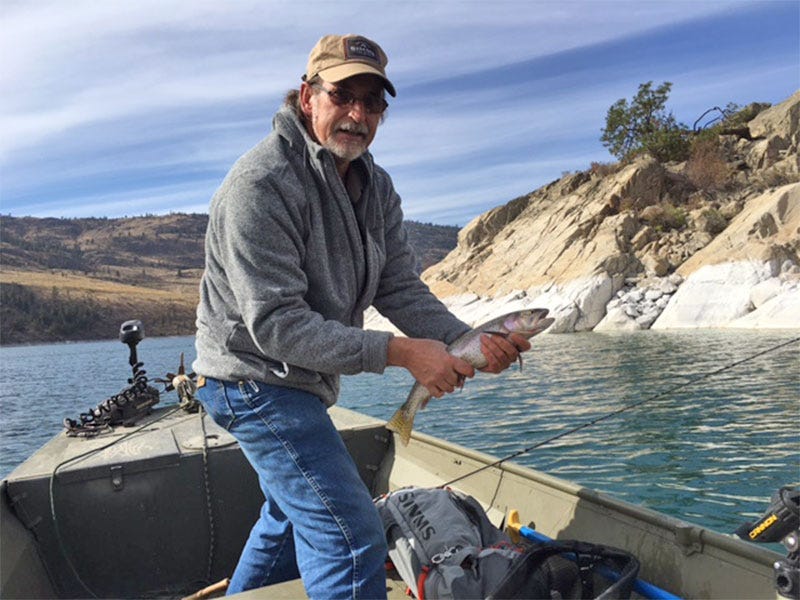Fall Streamer Fishing on Omak Lake


Omak Lake is known for its springtime fishing of pods of Lahontan cutthroats that cruise the shallows. Groups of anglers flock to the lake to site cast these fish as they move around the lake. The Lahontans are looking for spawning areas along the shoreline in only a few feet of water. The fishing can be rewarding with double-digit days. For me and a few others, there is another time of year that we find equally, if not more, rewarding than the springtime and that is fall.
Want to learn how to catch Lahontan Cutthroat Trout During Fall? Read about it here.
In the fall nights become cooler and daytime temperatures are more moderate. It is a welcome relief to hot, dry, and smoky summertime conditions. The sun rises later and sets earlier each day. The colors around the lake change to bright colored brush strokes. And, young baitfish school up close to the shoreline in shallow water. Also, large Lahontan cutthroat prowl just out of sight, on the hunt for their next meal.

How do Lahontans Feed?
It is this time of year when the Lahontans, just like other trout found in our area lakes, need to fatten up for the coming winter months. Schools of young red side shiners and peamouth chubs can be found, close to shore, in schools of 25 to 100. The size of these young fish can vary from 1 to 2 ½-inches. You won't see the Lahontans cruising in the shallows, but they are close. Instead, they are patrolling back and forth, just out of sight, watching and waiting where the shallow water slopes off in the deeper depths.
Want to catch Lahontans at Omak Lake? See the latest Omak fishing report here.
The old saying, “being at the right place at that right time” has lent me a firsthand look at the feeding practice of these predatory fish. What I have seen is how these cutthroats will shadow, from a distance, a group of smaller baitfish. Quite simply, when the smaller fish become complacent and mill about feeding, the Lahontans will race in and make a strike on the closest minnow. Most of the time, I have seen this behavior when there are two or three Lahontans together. They come in from different angles, intercepting and scattering young fish. It’s opened my eyes to understanding their feeding behavior and choosing the right fly.
Fly Patterns that Catch Lahontan
Fly patterns that have the following color combination are what I’ve found to work the best; olive/white, gray/white, and brown/white get the bulk of the action when we are on the water here. (Of course, it goes without saying that some patterns with only have one color will also produce fish.) Regardless, one factor that any pattern should have is: flash. Whether it has a little or a lot of flash is a matter of the time of day, the weather, and the fish’s mood at that time. I have seen where one pattern is the hot ticket only to have the response from the fish turn off. Also, I’ll go through a couple of patterns until I find the one that sparks their feeding interest again. Finally, I’ve found that a lot of the streamer patterns we carry at the fly shop, whether they imitate minnows, sculpins, or other bait fish, are chosen for their use at Omak Lake.
Do you have the right fly patterns to get the fish biting? Check out our selection of streamers.
